9+ Product Inventory Templates – Word, PDF
Businesses in the manufacturing and the food industries handle different inventories as per recorded in their respective financial reports. The goods produced and sold by business entities to consumers form part of the Inventory on the Balance Sheet. Managing product inventory effectively is vital in order to have a smooth flow of the company’s operations.
To Track Inventory on goods, an appropriate inventory sheet is necessary. The various product inventory templates presented on this website show inventory forms fit for a particular types of products. They are provided in Word and in PDF formats and are available for your perusal.
Product Inventory Database Template
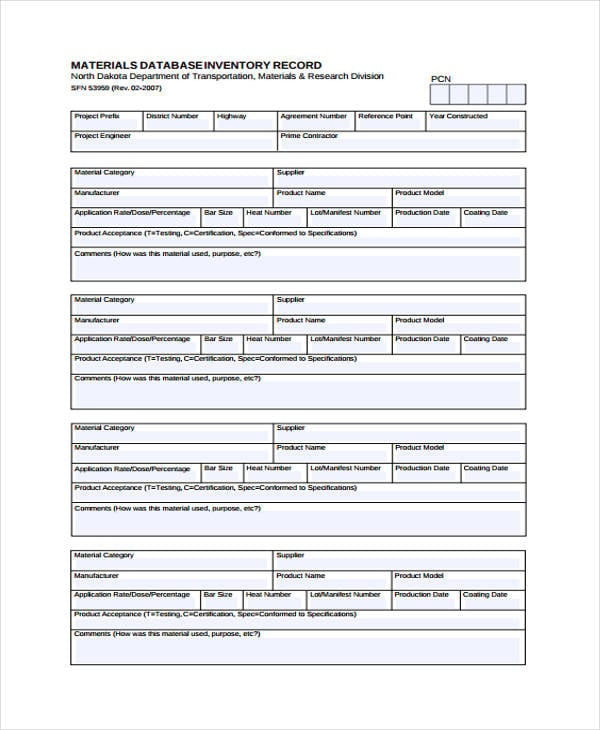 dot.nd.gov
dot.nd.govFinancial Product Inventory
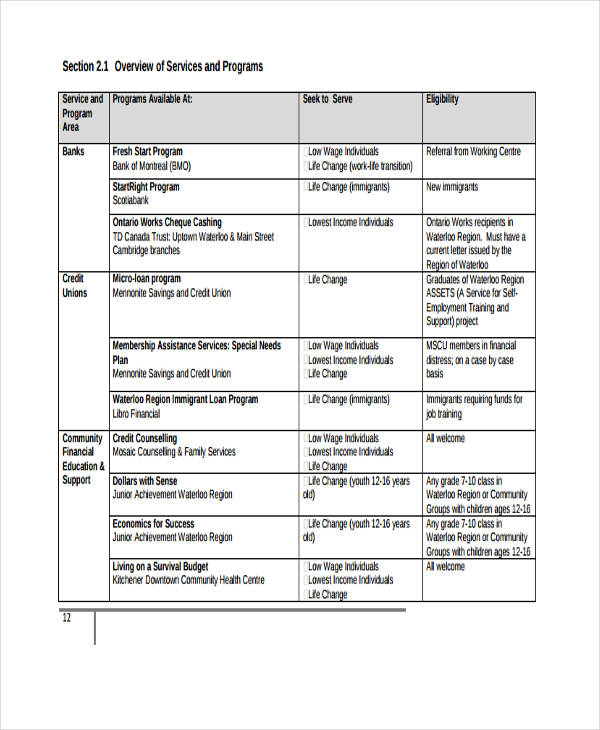 cec.info.yorku.ca
cec.info.yorku.caProduct Valuation Inventory
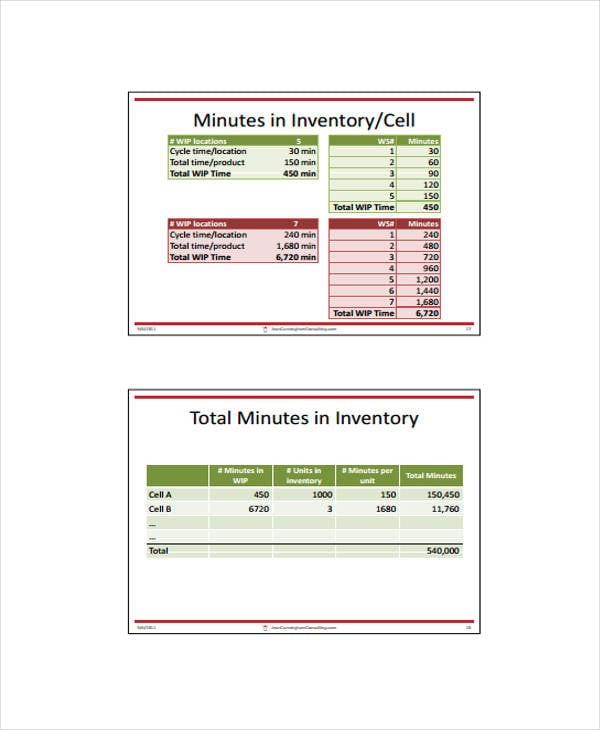 leanaccountingsummit.com
leanaccountingsummit.comRetail Product Inventory
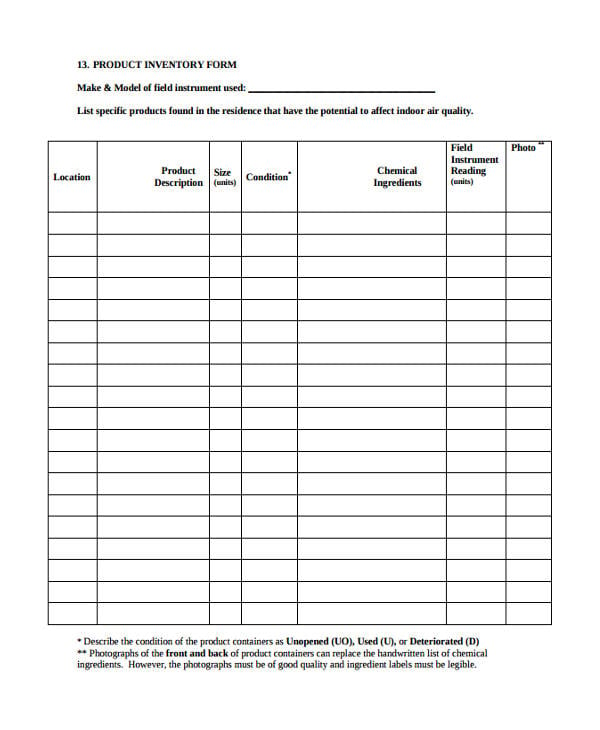 health.ny.gov
health.ny.govHealth and Personal Care Product
 projects.hsl.wisc.edu
projects.hsl.wisc.eduWhat is a Product Inventory
Product inventory is comprised of the goods in stock readied for the purpose of a sale. There are three components in product inventory, as follows:
- Raw Materials – This includes the needed materials for the production of the goods.
- Work-In-Progress – These are goods that have undergone a percentage of the production process.
- Finished Goods – This are the completed products of the production process, ready to be sold to customers.
For examples, look into the different Asset Inventory Templates on this website.
How to Make a Product Inventory Sheet
In creating a product inventory sheet, you can choose to run a word processing program, a spreadsheet program, or a database program. The following are important elements necessary in a product inventory sheet as shown on Inventory Management Templates:
- Product Code, Name and Description – A list of the goods is needed for every stage of the production process.
- Product Quantity and Cost – This column of the sheet involves the transfer of goods for the given period. Applying cost to the transfers is usually done by the accounting personnel in charge of the inventory process.
- Inventory on Hand – This includes computed and actual inventory count. The computed inventory is the net quantity generated from applying the transfers to the starting inventory. Reconciliation is done afterwards explaining the need for a manual count.
Food Product Inventory
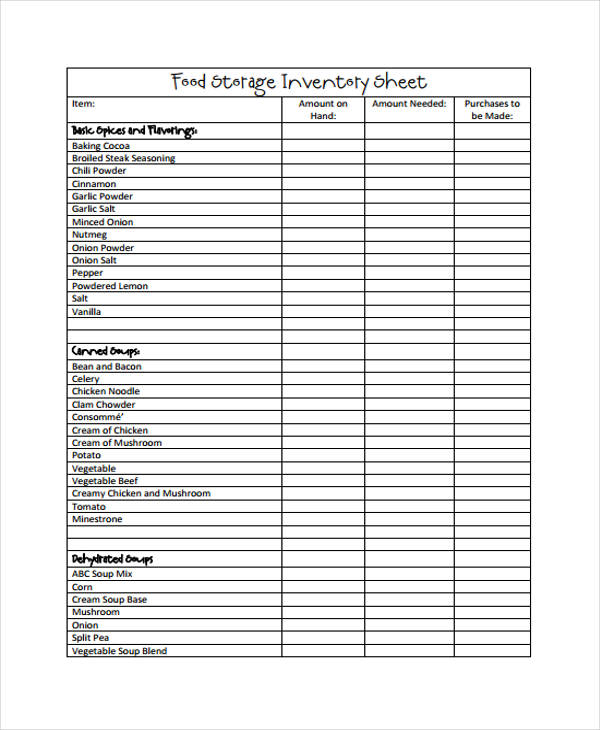 images.template.net
images.template.netMonthly Product Inventory
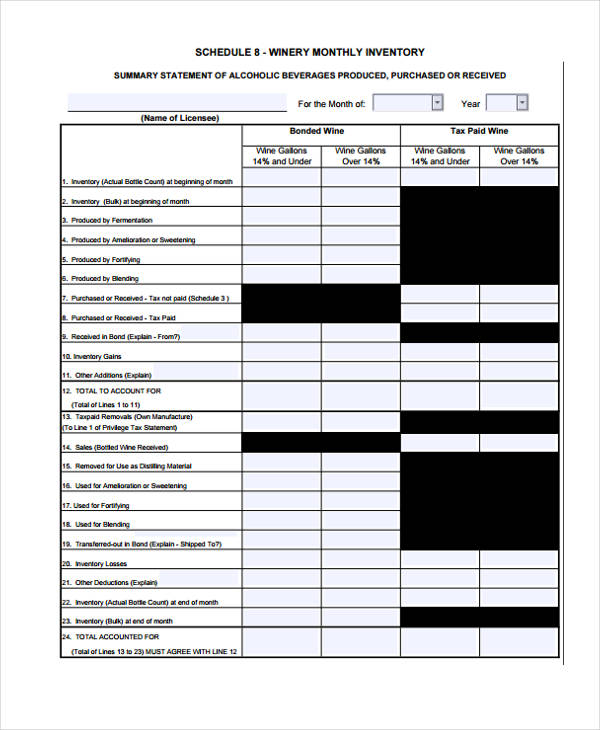 oregon.gov
oregon.govProduct Planning Template
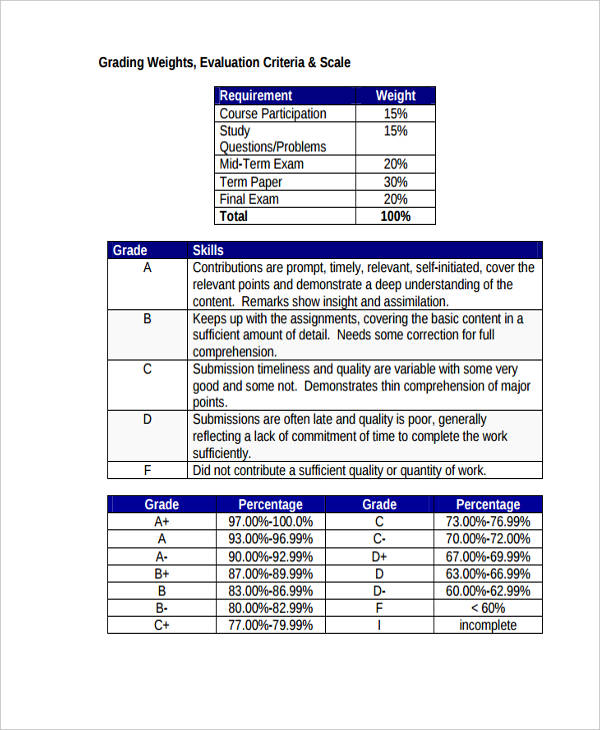 ggu.edu
ggu.eduProduct Sales Inventory
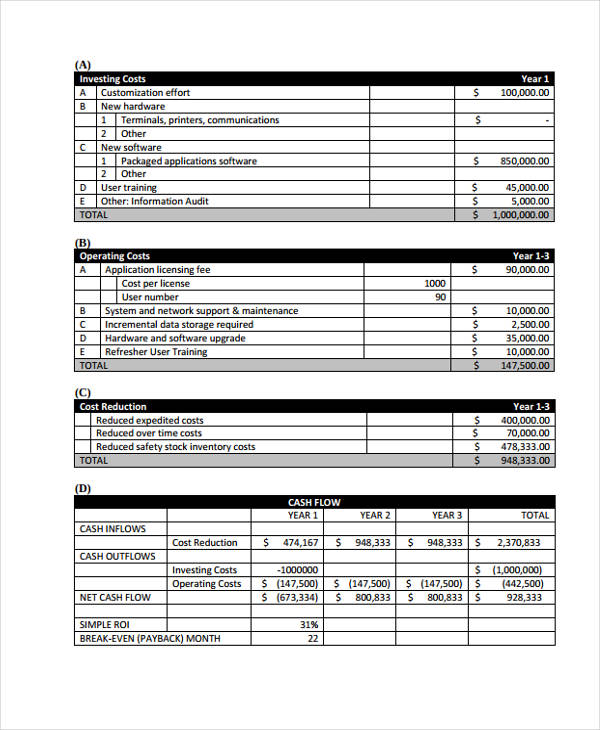 swallin.files.wordpress.com
swallin.files.wordpress.com
How to Manage Product Inventory
Proper management of product inventory is essential to lessen redundancy in administrative expenses. Here are some tips you can adopt in managing product inventory:
- Have a production plan. Incorporate a daily production plan to avoid overstocking products. Goods are subject to depreciation and damage when kept in warehouses for a long time. Stock goods or products just enough for sales orders.
- Make accurate inventory records. Transfer of goods between production departments must be accounted for so as to maintain accurate information. You can use of Free Inventory Templates for product inventory sheets and reports.
- Categorize goods properly. Classify your products using the ABC classification. Prioritize high demand products in organizing inventory; second, goods with average demand; lastly, the slow moving items.
- Implement a periodic inventory. Time should be allotted time for the cross-checking the report generated with the actual products in stock.
Products are essential in generating revenue especially for manufacturing and food industries. Recording inventory data on sheets for every part of the production process helps in catering to consumers and in making accurate financial reports for stakeholders.
More in Inventory Templates
| 7+ Marketing Inventory Templates in PDF | 7+ Medical Supply Inventory List Templates |
| 11+ Workshop Inventory Templates in PDF | DOC | 11+ Real Estate Inventory Templates in Google Docs | Google Sheets | Word | Pages | XLS | Numbers | PDF |
| 12+ Supply Inventory Templates in Google Docs | Google Sheets | XLS | Word | Pages | Numbers | PDF | 17+ Best Equipment Inventory Templates in Google Docs | Google Sheets | Word | XLS | Pages | Numbers | PDF |
| 15+ Best Stock Inventory Templates in Google Docs | Google Sheets | Word | XLS | Pages | Numbers | PDF | 11+ Data Inventory Templates in Google docs | Google Sheets | XLS | Word | Pages | Numbers | PDF |
| 8+ Employee Inventory Templates in XLS | Word | Numbers | Pages | PDF | 18+ Best Inventory Report Templates in Google Docs | Google Sheet | XLS | Word | Pages | Numbers |
| 12+ Best Restaurant Inventory Templates in PDF | Word | Pages | XLS| Numbers | Google Docs | Google Sheets | 10+ Software Inventory Templates in XLS | Numbers | Pages | Word | PDF |
| 11+ Business Inventory Templates in Google Docs | Google Sheets | Word | Pages | XLS| Numbers | PDF | How to Create a Home Inventory [15+ Templates to Download] |
| 20+ Inventory Checklist Templates in Google Docs | Word | Pages | XLS | How to Create an Inventory List [19+ Templates to Download] |
| 11+ Small Business Inventory Templates in Google docs | Google Sheets | XLS | Word | Pages | Numbers | PDF | 11+ Inventory Spreadsheet Templates |
| 10+ Inventory Templates in Apple Pages | 10+ Inventory Template in Apple Numbers |
| 10+ Inventory Templates in Google Docs | 10+ Inventory Templates in Word |
| How to Make/Create an Inventory in Google Sheets [Templates + Examples] 2023 | 10+ Inventory Templates in PDF |
| 10+ Inventory Templates in Excel | 9+ Simple Inventory Templates |
| 12 Inventory Control Templates - PDF | 22 Inventory Templates in Excel |
| How to Conduct A Physical Inventory | Is It Time to Track Inventory? |
| 7+ Product Inventory Templates - Sample, Example | How Business Inventory is a Valuable Business Asset |
| How Inventory Investment Affects Profits and Cash Flow | 4+ Daycare Inventory Templates - Sample, Example |
| Ways to Analyze Inventory on the Balance Sheet | Define POS System for Inventory Management? |
| Ways to Cycle Count Your Inventory | Why Do Businesses Need Inventory? |
| What Is Inventory Financing and How Does It Work? | What to Choose - a Periodic or Perpetual Inventory System |
| 46+ Best Inventory Templates | 17+ Inventory Templates in DOC |
| 7+ Storage Inventory Templates - Sample, Example | 32+ Inventory Templates in PDF |
| 31+ Printable Inventory Templates | 41+ Free Inventory Templates |
| 6+ Sample Stock Inventory | 9+ IT Inventory Templates |
| 7+ Application Inventory Templates - Sample, Example | 22+ Inventory Templates |
| 6+ Donation Inventory Templates - Word, PDF | 7+ Sample Church Inventory |
| 7+ IT Inventory Templates - Sample, Example | 7+ Church Inventory Templates - Word, PDF |
| A Comprehensive Guide for Small Business Inventory Control | Components and Considerations of Inventory Carrying Costs |
| What Is Inventory Turnover? | How Inventory Turnover and Inventory Turns Are Calculated |
| 5+ Donation Inventory Templates - Sample, Example | 6+ Store Inventory Templates |
| 4+ Gift Inventory Templates - Word, PDF | 7+ Sample Data Inventory |
| 6+ Gift Inventory Templates - Sample, Example | 10+ Daily Inventory Templates - Sample, Example |
| 9+ Product Inventory Templates - Word, PDF | 5+ Data Inventory Templates |
| 6+ Business Inventory Templates - Samples, Examples | 17+ Daily Inventory Templates - Word, PDF |
| 8+ Landlord Inventory Templates - Sample, Example | 7+ Office Inventory Templates |
| 34+ Sample Inventory | 6+ Office Inventory Templates -Word, PDF |
| 5+ Grocery Inventory Templates - Samples, Examples | 7+ School Inventory Templates - Sample, Example |
| 5+ Store Inventory Templates - Word, PDF | 6+ Book Inventory Templates - Sample, Example |
| 6+ Storage Inventory Templates - Word, PDF | 8+ School Inventory Templates - Word, PDF |
| 9+ Excel Inventory Template | 4 Inventory Management Templates |
| 12+ Inventory Spreadsheet Examples | 7+ Application Inventory Templates |
| FREE 17+ Inventory Templates in PDF | 17+ Inventory Templates |
| 7+ Perpetual Inventory Templates | 541+ Inventory Templates - Free Sample, Example, Format Download! |
| 13+ Moving Inventory Templates – Free Sample, Example, Format Download | 16+ Software Inventory Templates – Free Sample, Example, Format Download |
| 13+ Inventory Database Templates | 15+ Bar Inventory Templates – Free Sample, Example, Format Download |
| 15+ Tenancy Inventory Templates – Free Sample, Example, Format Download | 21+ Inventory Report Templates – Free Sample, Example, Format Download |
| 13+ Rental Inventory Templates – Free Sample, Example, Format Download | 13+ Property Inventory Templates – Free Sample, Example, Format Download |
| 16+ Retail Inventory Templates – Free Sample, Example, Format Download | 21+ Warehouse Inventory Templates – Sample, Example, Format Download |
| 11+ Inventory Worksheet Templates – Free Sample, Example, Format Download | 14+ Server Inventory Templates – Free Sample, Example, Format Download |
| 13+ Bar Inventory Template – Word, Excel, Numbers, Apple Pages | 19+ Tool Inventory Templates – Free Sample, Example, Format Download |


 dot.nd.gov
dot.nd.gov cec.info.yorku.ca
cec.info.yorku.ca leanaccountingsummit.com
leanaccountingsummit.com health.ny.gov
health.ny.gov projects.hsl.wisc.edu
projects.hsl.wisc.edu images.template.net
images.template.net oregon.gov
oregon.gov ggu.edu
ggu.edu swallin.files.wordpress.com
swallin.files.wordpress.com





